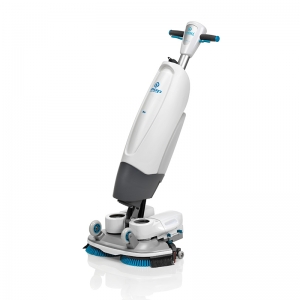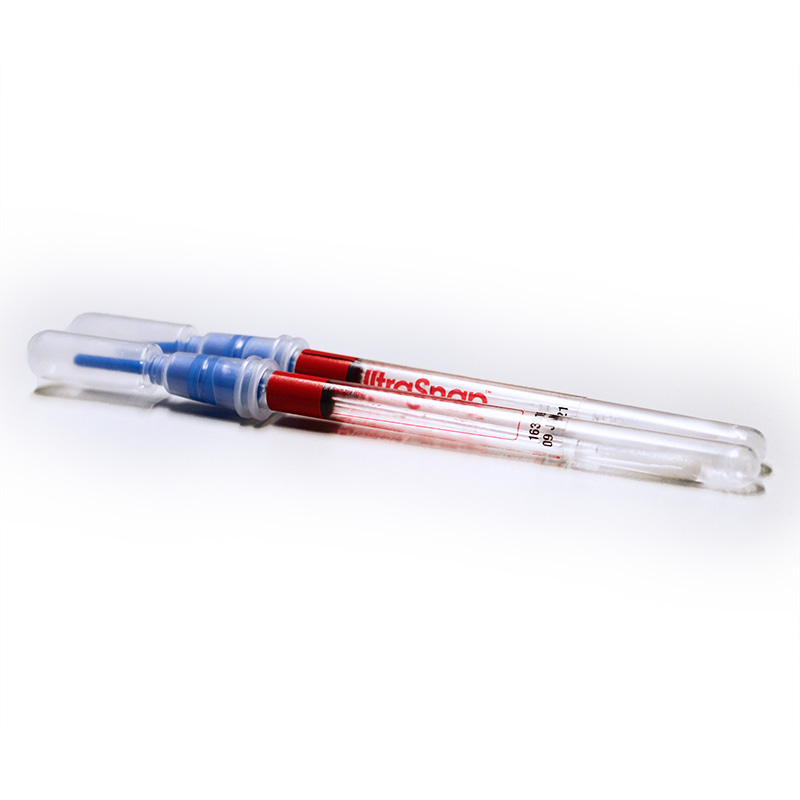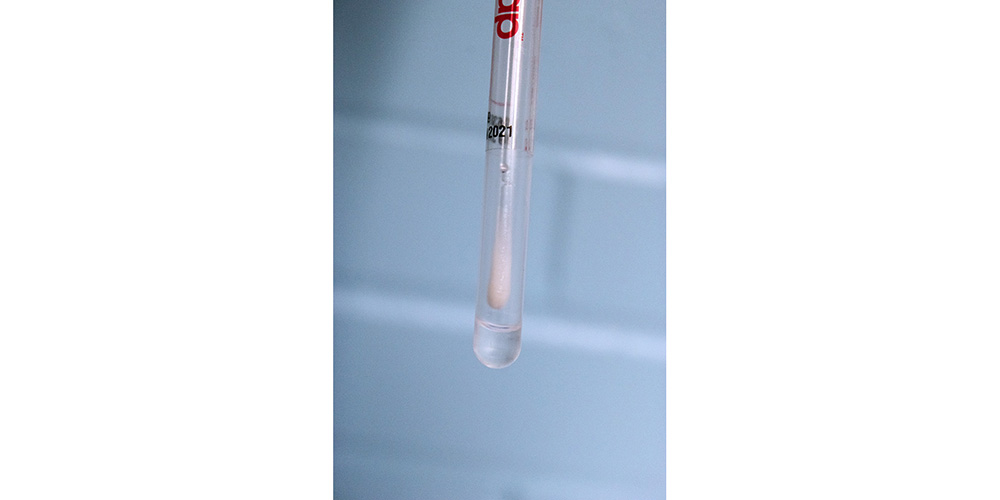

ATP Testing: The Complete Guide for Cleaning Companies.
 Emmeline | Product Specialist
Emmeline | Product Specialist
2 minute read
On average, we’re exposed to 60,000 germs a day. And it’s those germs that people will either pick up, carry or get ill from.
If we all know that most germs are not visible to the naked eye, why is a visual inspection still the norm for checking how effective the cleaning has been?
Does that make sense? Especially since COVID-19 has opened everyone’s eyes to the importance of effective cleaning.
ATP testing is the perfect solution. ATP is a cleaning verification system that counts the number of living cells on a sample you take from a surface. By testing the ATP levels on a surface, you can determine whether it is safe for human contact or not.
In this article:
3. How does ATP in cleaning work?
4. Who uses ATP in a cleaning company?
5. What does ATP mean for your customers?
Download the free ATP Workbook here
1. What does ATP stand for?
ATP stands for adenosine triphosphate – a molecule found in all living cells.
2. What is ATP in cleaning?
ATP testing is often used in the cleaning industry to ensure that surfaces and environments are properly cleaned and disinfected.
3. How does ATP in cleaning work?
ATP is a molecule found in all living cells. The ATP luminometer, or testing machine, counts the ATP from a sample taken from the tested surface. It highlights the bacteria, germs, food residue and any allergens that might be lurking there, invisible to the naked eye. You get your result, or score, measured in RLU (Relative Light Units).
The higher the ATP score, the greater the level of contamination, and the less effective the cleaning has been. With ATP, your new KPI will be to get that number down as low as you can to be able to prove to any prospective client that your cleaning cannot be faulted.
4. Who uses ATP in a cleaning company?
Anyone can! It’s an easy, straightforward system to use. All you need is some initial training to become a pro!
The Cleaners can take the ATP tests themselves and report their score to their Area Manager.
Area Managers can then pass that data on to their Operations Director to prove the effectiveness of your service.
The data from the ATP tests can also help the Sales and Marketing teams to prove to your potential clients that you “clean” is clean – not just ticking the boxes.
5. What does ATP mean for your customers?
Security. It’s a valid and recognised process - something they can trust. It’s not just a customer satisfaction score, ATP gives you a cleanliness score that shows your prospects the difference you make to the hygiene of their space.
Accountability. The process makes you and your cleaners accountable for the level of “clean” that you provide to your customers. It’s a measure you can share with your customers and be proud of.
Trust. Showing that you use ATP testing on your tenders builds the trust of your prospective customers in your service. They’ll trust you to follow through with your cleaners so that their space is always safe.
6. What you need for doing an ATP test
 A luminometer. That’s the proper name for an ATP testing machine.
A luminometer. That’s the proper name for an ATP testing machine.
ATP test swabs - generally supplied in packs of 100. You’ll need to bring along as many swabs as tests your undertaking at that cleaning contract.
Optional extras:
A 10 x 10cm template – Using a guide helps to ensure consistency in the size of the spaces you’re testing. Alternatively, you can map this size out by eye – but it will not be as accurate. A free template is available in our free ATP testing workbook.
A luminometer stand is usually supplied with the ATP machine (luminometer) but you don't necessarily need it. You can simply hold the ATP machine in your hand while you wait 15 seconds for the result.
7. How to do an ATP test
Please read these instructions, or the instructions provided, before beginning the ATP test.

Set up
- Clean the area you want to test
- Identify a 10 x 10cm area for testing, or as close as possible.
- Turn on the luminometer to give it time to turn on and calibrate.
- Thoroughly wash your hands before conducting the test - do not wear gloves, the static energy from gloves can interfere with the ATP reading.
8. What are the ATP standards for a commercial cleaning company?
|
Area / Contract Type |
ATP Standard |
|
Food Preparation & Catering Areas |
<10 |
|
Schools & education facilities Senior living facilities Hotels & Hospitality Commercial office contracts |
<30 |
9. Does a “0” on ATP mean the surface is sterile?
No, a “0” on an ATP test does not indicate sterility.
Sterility is the complete absence of microorganisms including bacteria, fungus, and their spores. What an ATP test does is detects all sources of ATP, but it cannot differentiate ATP from food or bacteria – that’s why a zero RLU result cannot mean the surface is sterile.
10. Benefits of ATP tests
More efficient. You can see how clean your sites are. Are the products your staff use the best products for that site? Are they using them correctly and efficiently?
More accurate. Eliminates the human error of visual inspection.
Simple process. You have your result within 30 seconds after virtually no set-up.
Quality control. Give your customers confidence in the quality of your service.
Adds validity to your service. It’s no longer a case of simply saying, “we’ve cleaned it”. You have an actual number from a recognised testing procedure.
Regular reporting data. It’s quantitative data, real numbers that show how effective your cleaning is.
11. Limitations of ATP tests
ATP tests cannot test for Viruses. That’s because viruses are not living cells. However, viruses are typically easier to inactivate than bacteria and other pathogens. If those other pathogens are eliminated, there is a high chance that the viruses could be too.
Probiotics and synbiotics use good live bacteria (living organisms) to clean the surface. They need to stay alive in the area for the cleaning action to continue days after its initial cleaning. Unfortunately, the ATP cannot differentiate between good and bad bacteria - resulting in a higher ATP score, even though the surface could be completely safe.
Like all tests, ATP tests can be skewed by different variables. One example is wet surfaces – a test taken in wet conditions will be liable to be higher than the actual cleanliness of the surface.
ATP is not a final test of the cleanliness of a surface. It only tests for the living micro-organisms, but that doesn’t mean the surface is clean – some dust and dirt will remain undetected as they don’t contain ATP.
Beware, gloves can actually cause ATP scores to rise. This is because static buildup and discharge between the gloves and swab tubes can interfere with the reading, causing it to read a higher score. This can be avoided by thoroughly washing your hands before doing the ATP test and/or inserting the ATP swab tube into the luminometer with an ungloved hand.
12. What do ATP tests cost?
The average cost of one ATP test swab is usually between £2 and £5.
The average cost of an ATP testing luminometer machine is usually between £1,000 and £2,000.
13. How often should you do ATP tests?
The main focus here is to make sure you do them regularly. We recommend that your cleaners carry out the ATP testing weekly to get the most reliable results.
Alternatively, you can do them once a month, depending on how accurate you want your results to be, how much time you have to set aside for it and who will be doing it. Once you've decided how often to do the tests, stick to that routine to get the most reliable results.
14. What are the key areas to test in a commercial cleaning contract?
The point of doing ATP tests is to check the cleanliness of a surface. Examples of areas/surfaces you might want to test include;
- Desks
- Floors
- Door handles and push plates
- Kitchen worktops
- Frequently touched buttons or switches.
15. How to lower ATP scores
Ensure your surfaces are thoroughly scrubbed during the cleaning – this will remove any biofilm, an invisible group of pathogens that contaminate the surface.
Make sure the surface is thoroughly dry when you take the test. If the surface is slightly damp, the test will be skewed - giving you a higher score.
Follow a routine cleaning process with reliable cleaning products to keep any pathogens from multiplying on a surface.
16. What products lower ATP scores?
With just water
Point-of-use cleaning solutions
Chemical sanitisers
Please note, probiotic cleaning solutions do not lower ATP scores. To be as effective as they are, they must contain good bacteria to continue cleaning the area for days after the initial clean. These bacteria are living microorganisms, so they produce ATP. While the Probiotics will still be removing the dirt, grease, grime, smells, etc, the ATP score might not be much lower as it’s only the dirt removal that is bringing the score down, not the cleaning solution.

















